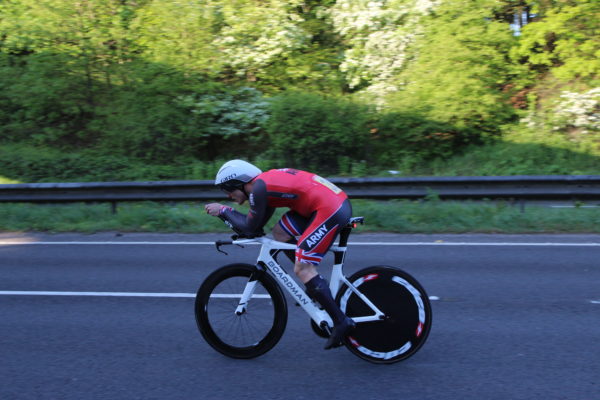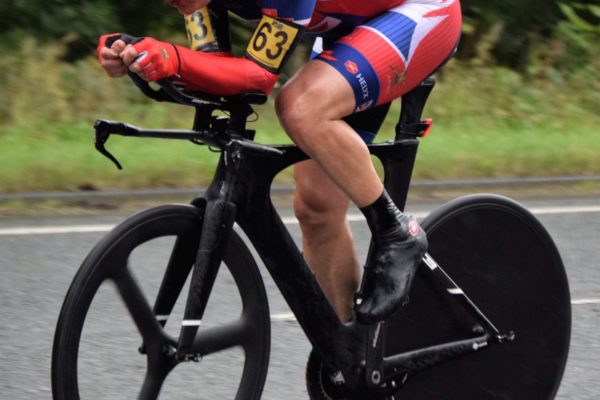A time trial tests a rider not against other cyclists, but the watch. Other than in team events, which are less numerous, competitors race individually, starting at intervals of a minute or more. Drafting is not permitted in individual time trials. UK races can be organised over any distance but in practice they are most often run at standard distances of 10, 25, 50 and 100 miles with occasional races at 30 miles. The winner is the fastest over the course, routed so it finishes close to the start to lessen the effect of hills and wind. Longer events, lasting 12 or 24 hours are also held, the winner covering the greatest distance.
A time trial bike differs from a road racing bike in several ways. It alters the position of the rider; with the arms resting on time trial bars, rather than drop bars, the position becomes much more aerodynamic. The frame tends to be a little heavier than the average road bike, as they are built for speed through aerodynamic gains, rather than weight reduction; riders tend to be able to travel 1-3mph quicker on a time trial bike than on a road bike. The back disc wheel is also heavier but more streamlined addition, that enables riders to make the necessary margins that are vital to success in the time trial.




